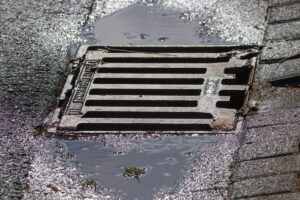
Key Takeaways
- Proper gutter installation is integral for protecting your home’s foundation and structure by efficiently directing rainwater away.
- Choosing the right gutter material and accessories, such as guards and splash blocks, based on climate and budget can significantly improve performance and reduce maintenance.
- Whether DIY or hiring professionals, understanding installation steps and maintaining gutters regularly helps prevent costly repairs and extends your home’s longevity.
Gutters play an integral role in home maintenance by protecting the foundation and overall structure from the damaging effects of water. Whether you are contemplating a DIY installation or enlisting the expertise of professional gutter installation companies Hillsboro, it’s crucial to understand the intricacies involved. Knowledge about gutter installation can prevent costly repairs and significantly extend the lifespan of your home. Properly installed gutters save you money over time and add to the overall value of your property by safeguarding its integrity.
Understanding the Importance of Gutters
Gutters are far more than decorative trim for your roofline. Their primary function is directing rainwater away from your home and safeguarding it against soil erosion, foundation issues, and basement flooding. Without robust gutters, water can accumulate around the foundation, potentially leading to structural damage. Quality gutter systems ensure the longevity of your home while also promoting good landscaping health by preventing unnecessary water pooling. A well-thought-out gutter strategy is a smart investment for any homeowner, enhancing both property value and curb appeal.
Choosing the Right Gutter Material
When selecting gutter materials, consider factors like climate, maintenance, and budget. Aluminum gutters are popular for their durability and rust resistance, making them a common choice among homeowners. Copper, known for its aesthetic appeal, develops a patina over time and is incredibly durable. Vinyl is cost-effective and easy to install, but it may not hold up well in extreme weather conditions. Steel is robust and can withstand heavy loads but requires regular maintenance to prevent rust. Your choice will depend on weighing these factors against your priorities and long-term goals for home maintenance.
Essential Tools for DIY Gutter Installation
If you are taking the DIY route, having the right tools and a detailed plan is crucial for a successful project. You will need a stable ladder, a quality drill, screws, and a hacksaw for precise cuts. Safety cannot be stressed enough—make sure your ladder is in good condition and positioned safely. Use gloves, goggles, and other protective gear to safeguard yourself while handling gutters and power tools. Beyond tools, patience and attention to detail are key skills in ensuring a successful project that meets aesthetic and functional demands.
Step-by-Step Guide to Installing Gutters
1. Measuring and Planning the Layout
The first step is to measure your roof’s perimeter carefully to determine how much material is required. An accurate measurement will help prevent unnecessary material costs and ensure your installation proceeds smoothly. Planning the layout involves considering the roof’s pitch and where the downspouts will be most effective in directing water away from the house.
2. Attaching Gutter Brackets
Proper installation of gutter brackets is key to ensuring the system can support its weight. Attach brackets every few feet, which ensures even weight distribution and stability. Use robust, weather-resistant screws to ensure the longevity and resilience of the installation.
3. Connecting Sections and Sealing Joints
Connect gutter sections using good-quality silicone sealant to prevent leaks. Proper sealing is vital for maintaining water flow integrity and reducing the risk of leaks that lead to water damage. Inspect each joint carefully to ensure a tight and watertight fit.
4. Ensuring Proper Slope for Water Flow
Setting the correct slope is crucial; too much slope can lead to inefficient water drainage, while too little may cause standing water. A slight tilt of about 1/4 inch for every 10 feet of gutter ensures optimal drainage efficiency, thus protecting both your home and its surroundings from water-related issues.
Routine Maintenance Tips for Gutters
Routine maintenance of your gutter system cannot be overstated. At least twice a year, clear debris such as leaves and twigs to prevent blockages. Inspect for leaks or any structural damage after significant weather events. Regular upkeep ensures the gutters function effectively, reducing the risk of unforeseen repairs caused by heavy rains or freezing conditions.
Understanding Gutter Accessories and Add-Ons
Accessorizing your gutter system enhances its efficiency and lifespan. Consider adding gutter guards to avoid debris accumulation, thus reducing maintenance requirements. Splash blocks can aid in redirecting water away from the base of your home. Tailor these add-ons based on your specific needs and regional weather patterns, ensuring optimal performance year-round.
Signs It’s Time to Hire a Professional
There are instances when professional expertise may be necessary, such as when gutters sag excessively, overflow frequently, or require significant repairs. Professionals can offer valuable insights and provide a more comprehensive assessment and installation to fit unique architectural features. Engaging experts is often a wise investment, ensuring any underlying issues are addressed efficiently.
